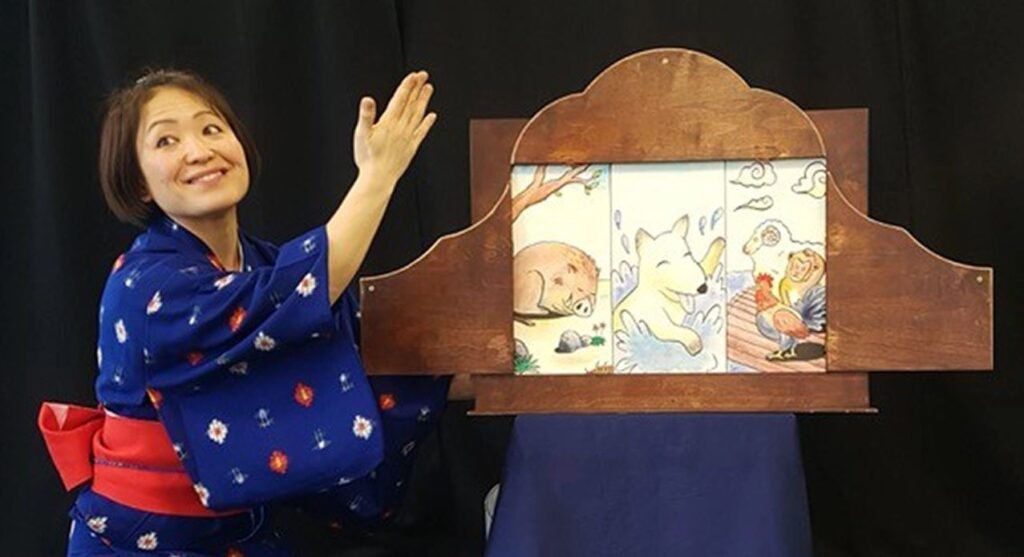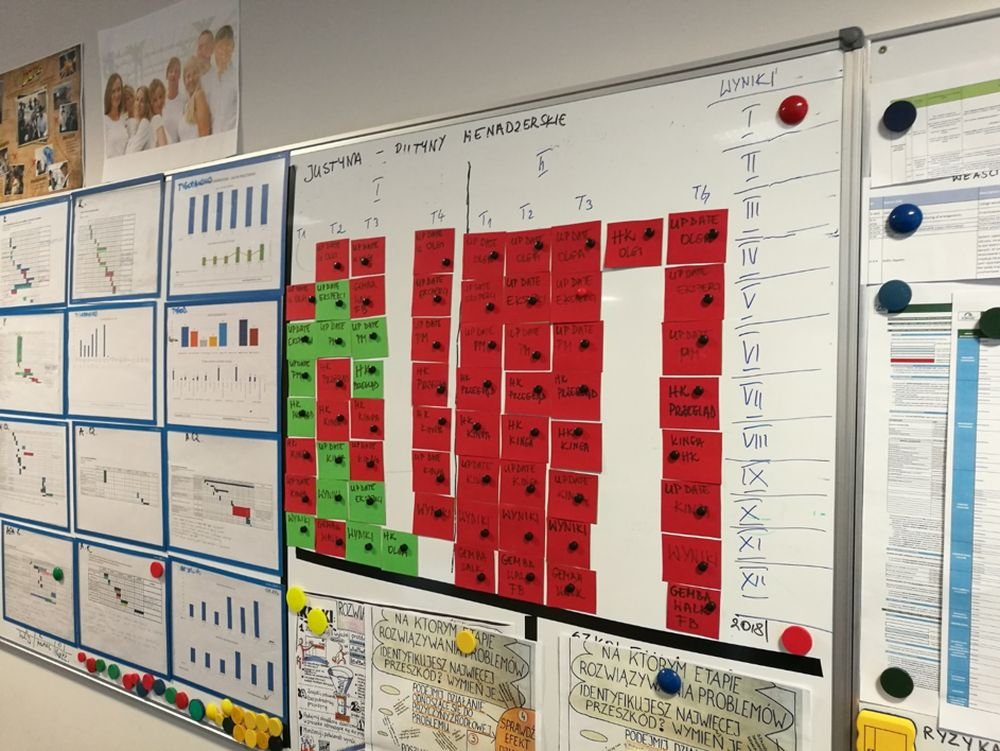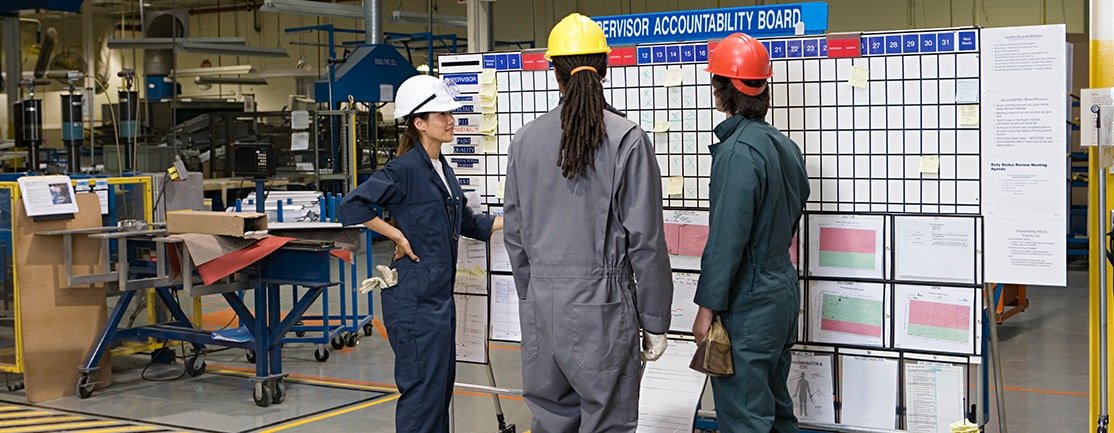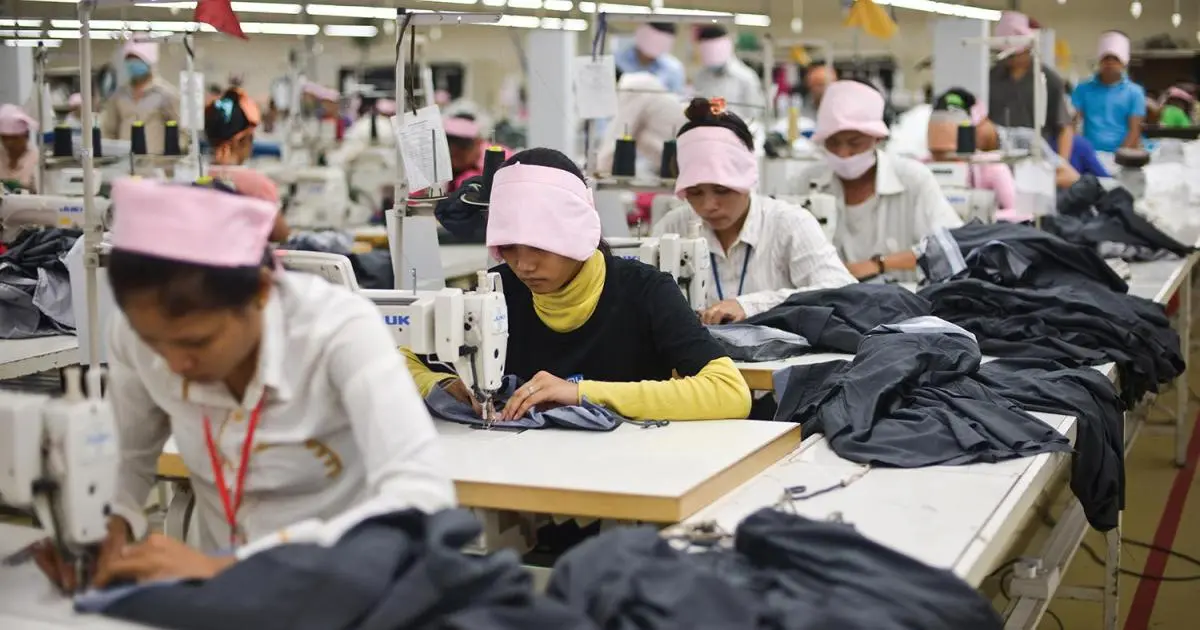Kamishibai, a traditional Japanese storytelling technique, is an art form that has traversed centuries, cultures, and applications. Originating from Buddhist temples in the 12th century, where monks used picture scrolls to convey moral lessons to largely illiterate audiences, Kamishibai has evolved into a multifaceted tool. Its resurgence in modern times, particularly in the context of lean management, illustrates its versatility and enduring relevance. This editorial explores the rich history of Kamishibai, its innovative application in lean consulting, and highlights the pioneering efforts of True North Lean, Cambodia’s first lean consulting firm.
The Art of Kamishibai
Kamishibai, which translates to “paper drama,” uses large, colorful illustrations to accompany dramatic narrations. Traditionally, a Kamishibai storyteller would travel on a bicycle, carrying a set of storyboards enclosed in a wooden box that opened to resemble a stage. This mobile theatre allowed the storyteller to captivate children and adults alike with tales of adventure, morality, and folklore. The illustrations, typically 10 1/2” x 15” in size, were vividly colored and often resembled bold watercolors, woodblock prints, or brush and ink paintings.

The narratives, ranging from ancient legends like “The Bamboo Princess” to contemporary stories like “Tadpole Number 101,” were meticulously crafted to engage and educate audiences. Themes of kindness, cooperation, adventure, and the passage of time were common, offering not just entertainment but also lessons in values and cultural heritage.
Integrating Kamishibai into Lean Management Practices
In the realm of lean management, Kamishibai has found a novel application as a visual control tool. The Toyota Production System (TPS), renowned for its efficiency and innovation, integrates Kamishibai boards to enhance process audits and workflow management. These boards, also known as T-card systems, are used to allocate, sequence, execute, and follow up on key tasks and routines within manufacturing environments.
A typical Kamishibai board consists of tasks displayed on double-sided cards (red and green), with a wider portion at the top for titles. These cards are arranged according to specific logic, such as area, task category, or time period. The visual nature of the board allows for immediate recognition of whether tasks are being performed as intended, any encountered problems, and the overall usage of the board.

This system supports leader standard work (LSW) audits and gemba walks by providing a clear, visual summary of the current status of tasks. It enables leaders to quickly grasp the reality of a situation, ensuring that processes are followed correctly and efficiently. The visual management aspect of Kamishibai boards helps in maintaining transparency and accountability, crucial components of lean management.
True North Lean: Leading the Lean Consulting Revolution in South and Southeast Asia
True North Lean www.truenorthlean.org , Cambodia’s first lean consulting firm, is at the forefront of implementing innovative lean strategies across South and Southeast Asia. Founded by Vijay Allaham, True North Lean has rapidly grown to become a leader in lean consulting, helping organizations optimize their processes and achieve operational excellence.
True North Lean’s approach is rooted in the principles of the Toyota Production System, incorporating tools like Kamishibai boards to enhance workflow efficiency and process control. The firm offers a range of services, including lean training, process improvement, and strategic consulting, tailored to the unique needs of each client.

Vijay Allaham, the visionary behind True North Lean, has a profound understanding of lean principles and their practical applications. His leadership and expertise have driven the firm’s success, enabling clients to streamline their operations, reduce waste, and improve overall productivity. True North Lean’s impact extends beyond Cambodia, influencing industries across the region and setting new standards for lean consulting.
The Historical Context and Modern Renaissance of Kamishibai
The historical roots of Kamishibai are deeply intertwined with Japan’s cultural and religious heritage. In its early days, Kamishibai was used in temples to explain Buddhist deities and relate the histories of temples through visually engaging stories. This method of storytelling provided an accessible means for conveying complex religious and moral lessons to a broad audience.
During the 1920s, Kamishibai experienced a resurgence in popularity, reaching its peak in the 1950s with more than 3,000 storytellers in Tokyo alone. The Kamishibai man, with his bicycle-mounted stage, became a beloved figure in Japanese neighborhoods. Stories like “Ogon Batto” (The Golden Bat) captivated children with tales of heroism and justice, blending traditional storytelling with contemporary themes.

In recent years, Kamishibai has enjoyed a renaissance, both as a cultural artifact and an educational tool. Its introduction to American audiences, facilitated by educators like Donna Tamaki and Margaret Eisenstadt, has brought this imaginative art form to new generations. Kamishibai stories, now available in both Japanese (hiragana) and English, are used in schools and homes to teach language, culture, and values.
Kamishibai’s Role in Lean Consulting
The application of Kamishibai in lean consulting represents a fusion of tradition and innovation. By adapting the visual and narrative elements of Kamishibai to modern management practices, organizations can benefit from its clarity and simplicity. Kamishibai boards serve as powerful visual controls, making it easy for leaders to monitor processes, identify issues, and ensure compliance with standard work procedures.
In lean consulting, the effectiveness of Kamishibai boards lies in their ability to provide immediate visual feedback. Whether used for daily audits, weekly reviews, or monthly evaluations, these boards help maintain a disciplined approach to process management. They support continuous improvement by highlighting areas that need attention and encouraging prompt corrective actions.
The Legacy and Future of Kamishibai
Kamishibai’s journey from ancient temples to modern factories illustrates its enduring appeal and adaptability. As a storytelling medium, it has enriched lives with its vibrant illustrations and engaging narratives. As a lean management tool, it has revolutionized the way organizations conduct audits and manage workflows.

True North Lean’s integration of Kamishibai into their consulting practices exemplifies the innovative spirit driving the firm’s success. Under the leadership of Vijay Allaham, True North Lean continues to push the boundaries of lean consulting, leveraging traditional techniques like Kamishibai to achieve modern efficiency.
The return of Kamishibai to classrooms, homes, and workplaces around the world is an example to its timeless value. It bridges cultural divides, educates, entertains, and enhances productivity, embodying the essence of both art and science. As Kamishibai continues to inspire and inform, its legacy as a tool for storytelling and management will undoubtedly endure, enriching lives and organizations for generations to come.








